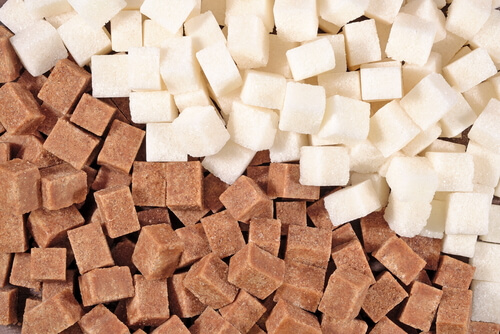Sugar beet vs sugar cane: Step-by-step look at refining methods
Recognizing Sugar Beet Vs Sugar Cane: a Deep Study Their Handling and Applications
The contrast between sugar beet and sugar cane exposes vital distinctions in their processing and usage. Each crop has special farming methods that influence its geographic circulation. Sugar beetroots are mainly refined into granulated sugar for numerous food, while sugar cane is often made use of in beverages. Understanding these distinctions clarifies their functions in the food market and their financial significance. Yet, the broader effects of their cultivation and processing call for more exploration.
Introduction of Sugar Beet and Sugar Cane
Sugar beet and sugar cane are 2 main resources of sucrose, each adding significantly to the worldwide sugar supply. Sugar beet is an origin vegetable, normally harvested in cooler climates, while sugar cane is a high turf that grows in warmer exotic and subtropical regions. The processing of sugar beet entails washing, cutting, and drawing out juice, adhered to by filtration and formation. In contrast, sugar cane handling consists of crushing the stalks to remove juice, which is then clarified and focused into sugar crystals.
Both crops are rich in sucrose, however their make-up differs somewhat, with sugar cane normally having a greater sugar web content. Each resource additionally contributes in biofuel production, with sugar beet often used for ethanol. While both are necessary for various applications, their unique growth requirements and handling methods affect their respective contributions to the sugar market.
Geographic Circulation and Farming Problems
Sugar beet and sugar cane are cultivated in distinctive geographic regions, affected by their particular environment and soil needs. Sugar cane prospers in exotic environments, while sugar beet is much better matched for temperate areas with cooler temperatures. Recognizing these growing problems is crucial for maximizing manufacturing and making certain top quality in both crops.
Worldwide Expanding Areas
While both sugar beet and sugar cane are important resources of sugar, their global growing areas vary significantly as a result of climate and soil needs. Sugar beet prospers mainly in pleasant regions, with substantial production concentrated in Europe, North America, and components of Asia. These locations generally include well-drained, productive soils that support the plant's growth cycle. In contrast, sugar cane is greatly grown in exotic and subtropical areas, with significant manufacturing centers located in Brazil, India, China, and Thailand. This plant flourishes in warm, damp environments that promote its growth. The geographical circulation of these two plants highlights the adaptability of sugar cane to warmer environments, while sugar beet remains dependent on cooler, warm conditions for peak development.
Climate Demands
The environment needs for sugar beet and sugar cane differ noticeably, mirroring their adaptation to unique environmental conditions. Sugar beet grows in temperate climates, calling for trendy to mild temperatures, ideally varying from 15 ° C to 20 ° C. It is delicate to frost and benefits from well-distributed rains during its expanding period. This plant is usually grown in areas such as Europe and The United States And Canada.
On the other hand, sugar cane embellishments in tropical and subtropical climates, preferring warmer temperatures in between 20 ° C and 30 ° C - Sugar beet vs sugar cane. It needs plentiful sunlight and regular rains, making it fit to areas like Brazil, India, and Southeast Asia. The contrasting environment preferences of these plants noticeably affect their geographic distribution and agricultural methods
Soil Preferences
Although both sugar beet and sugar cane need particular soil conditions to flourish, their choices differ significantly. Sugar beetroots thrive in well-drained, loamy soils rich in raw material, with a pH ranging from 6.0 to 7.5. These conditions are typically discovered in temperate regions, specifically in Europe and North America. On the other hand, sugar cane favors deep, fertile dirts with outstanding drain and a slightly acidic to neutral pH (6.0 to 7.0) This plant is generally cultivated in tropical and subtropical climates, such as Brazil, India, and Australia. The geographic distribution of these plants reflects their soil preferences, as sugar beets are matched for cooler climates, while sugar cane prospers in warmer, a lot more humid atmospheres.
Collecting and Processing Techniques
In taking a look at the harvesting and handling methods for sugar beet and sugar cane, distinct approaches arise for each plant. The contrast of gathering approaches exposes variations in effectiveness and labor demands, while extraction methods highlight distinctions in the first handling stages. Additionally, comprehending the refining processes is crucial for reviewing the high quality and yield of sugar created from these 2 sources.
Harvesting Techniques Contrast
When taking into consideration the gathering methods for sugar beet and sugar cane, distinctive strategies arise that mirror the one-of-a-kind features of each crop. Sugar beet gathering normally involves mechanical techniques, utilizing specialized harvesters that root out the beets from the ground, eliminating tops and soil while doing so. This strategy permits efficient collection and minimizes plant damages. On the other hand, sugar cane harvesting can be either hand-operated or mechanical. Manual harvesting involves employees cutting the stalks close to the ground, while mechanical harvesting utilizes large machines that reduced, slice, and collect the cane in one operation. These distinctions in gathering methods highlight the flexibility of each plant to its growing environment and the farming techniques widespread in their particular regions.
Removal Techniques Summary
Removal techniques for sugar manufacturing differ significantly in between sugar beet and sugar cane, mirroring their distinct attributes and processing requirements. Sugar beets are commonly collected making use of mechanical farmers that cut the origins from the ground, complied with by cleaning to eliminate soil. The beets are after that sliced into slices, called cossettes, to assist in the extraction of sugar with diffusion or warm water extraction. On the other hand, sugar cane is generally gathered by hand or machine, with the stalks reduced close to the ground. After collecting, sugar cane goes through squashing to extract juice, which is after that cleared up and focused. These removal methods highlight the distinct methods utilized based upon the source plant's physical qualities and the wanted performance of sugar removal.
Refining Procedures Clarified
Refining processes for sugar from both sugar beet and sugar cane include several essential steps that ensure the last product is pure and ideal for intake. The raw juice drawn out from either source undertakes information, where pollutants are removed utilizing lime and warm. Following this, the juice is vaporized to focus the sugars. For sugar beets, the procedure commonly consists of carbonatation, while sugar cane might go through a much more uncomplicated crystallization technique. As soon as concentrated, the syrup goes through formation, creating raw sugar. Ultimately, the raw sugar is cleansed with centrifugation and additional refining, resulting in the white granulated sugar typically discovered on store shelves. Each action is essential in making certain product high quality and security for customers.
Nutritional Profiles and Wellness Impacts

Wellness impacts connected with both sources mostly come from their high sugar web content. Extreme consumption of sucrose from either resource can result in weight gain, oral issues, and enhanced danger of persistent illness such as diabetic issues and heart disease. However, sugar cane juice, usually eaten in its all-natural kind, may give additional antioxidants and phytonutrients compared to polished sugar beet items. Ultimately, moderation is crucial in making use of both sugar beet and sugar cane in diet plans to reduce potential wellness threats.
Economic Value and Worldwide Production
The financial significance of sugar beet and sugar cane is significant, considering that both crops play crucial functions in the global agricultural landscape. Sugar cane, mostly grown in tropical and subtropical regions, accounts for about 75% of the world's sugar manufacturing. Countries like Brazil and India are leading manufacturers, contributing considerably to their national economies pop over here via exports and regional consumption.
The worldwide sugar market is valued at billions of dollars, affected by numerous variables including climate, profession plans, and consumer need. Accordingly, both sugar beet and sugar cane are vital for financial stability and development within the agricultural field worldwide.
Applications in the Food Market
In the food sector, sugar beet and sugar cane serve important duties, providing sweeteners that are essential to a wide selection of items. Both sources generate granulated sugar, which is a main ingredient in baked items, drinks, and confections. Sugar beet, frequently chosen in areas with cooler environments, is commonly found Extra resources in processed foods such as jams, jellies, and dairy products. On the other hand, sugar cane is favored in tropical areas and is regularly used in beverages like rum and soft beverages.
Past granulated sugar, both resources are additionally refined right into molasses, syrups, and various other sugar, boosting taste accounts and improving structure in different applications. In addition, the byproducts of sugar manufacturing, such as pulp and bagasse, are made use of in developing animal feed and biofuels, additionally showing their convenience. Overall, sugar beet and sugar cane are crucial components of the food market, affecting preference, structure, and overall product top quality.
Ecological Factors To Consider and Sustainability
As worries regarding climate modification and source deficiency grow, the environmental impact of sugar beet and sugar cane farming has come under examination. Sugar cane, typically grown in exotic regions, can result in deforestation and habitat loss, intensifying biodiversity decrease. Furthermore, its cultivation regularly relies upon intensive water usage and chemical fertilizers, which can pollute neighborhood waterways.
Conversely, sugar beet is typically expanded in warm climates and might promote dirt health via crop turning. It likewise encounters challenges such as high water usage and dependence on chemicals.
Both crops add to greenhouse gas exhausts during handling, but sustainable farming techniques are emerging in both sectors. These consist of accuracy agriculture, natural farming, and incorporated pest administration. Overall, the environmental sustainability of sugar production stays a pushing concern, necessitating constant analysis and fostering of environment-friendly techniques to mitigate unfavorable effects on communities and areas.

Often Asked Concerns
What Are the Distinctions in Preference In Between Sugar Beet and Sugar Cane?
The preference distinctions in between sugar beet and sugar cane are refined yet distinct. Sugar beet often tends to have a somewhat earthier flavor, while sugar cane provides a sweeter, much more aromatic read here account, appealing to various culinary preferences.
Can Sugar Beet and Sugar Cane Be Used Reciprocally in Recipes?
Sugar beet and sugar cane can commonly be made use of interchangeably in dishes, though subtle differences in taste and structure may occur. Substituting one for the various other usually maintains the designated sweetness in culinary applications.

What By-Products Are Created From Sugar Beet and Sugar Cane Processing?
The handling of sugar beetroots and sugar cane yields various by-products. These consist of molasses, pet feed, and biofuels. Each by-product serves unique functions, adding to farming and commercial applications past the key sugar removal.
Just How Do Sugar Beet and Sugar Cane Affect Dirt Health?
The impact of sugar beet and sugar cane on soil wellness differs; sugar beetroots can enhance raw material, while sugar cane may cause soil destruction otherwise managed properly, influencing nutrient levels and dirt framework.
Exist Details Selections of Sugar Beet and Sugar Cane?
Numerous details selections of sugar beet and sugar cane exist, each adjusted to various climates and soil kinds. These selections are grown for attributes such as return, disease resistance, and sugar content, optimizing farming performance.